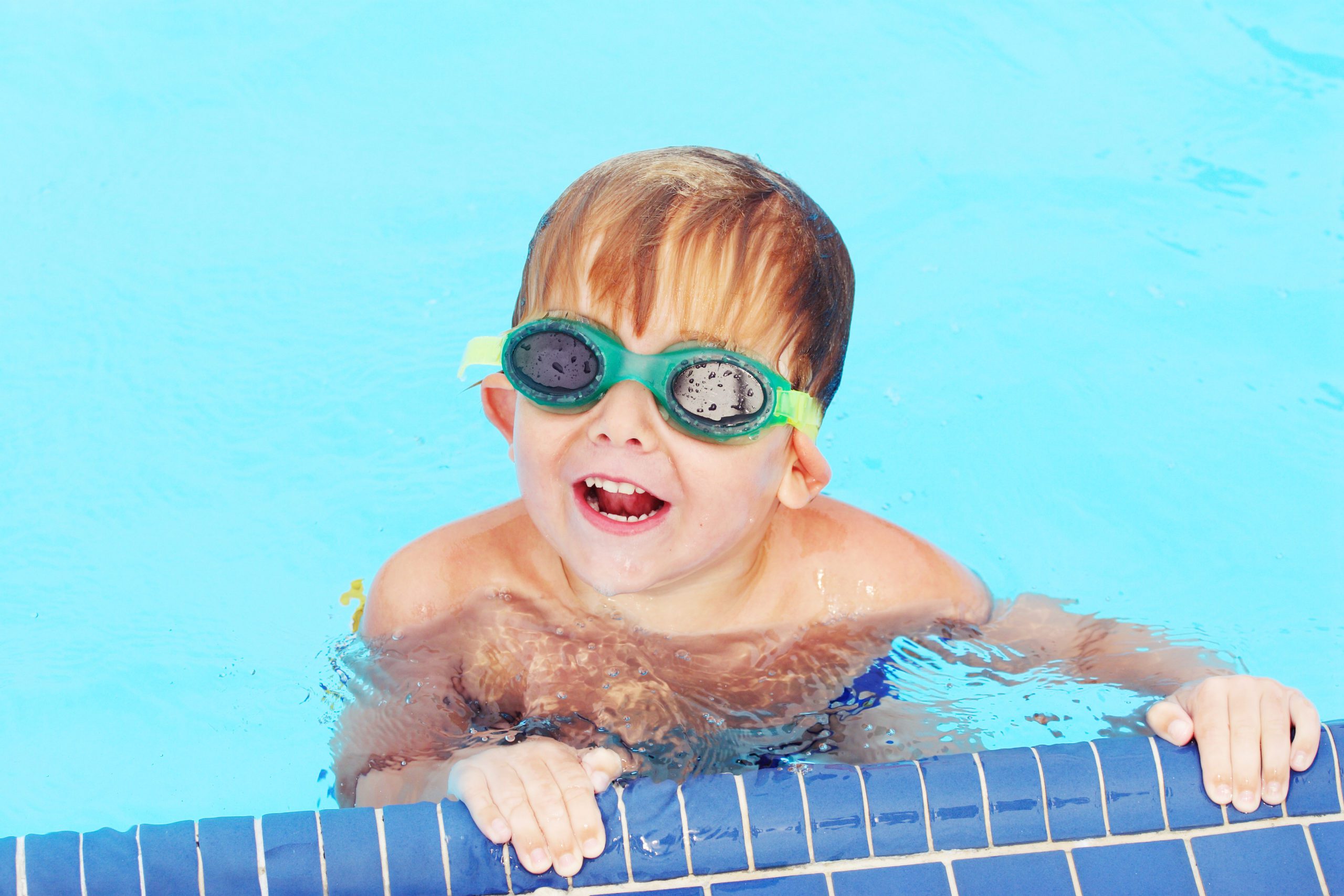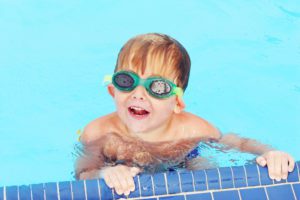Swimmer’s Ear or otitis externa is an unfortunate part of the waterlogged life.
Usually occurring after prolonged periods in the water, water trapped inside of the ear causes inflammation in the external ear canal. It’s more common in little humans than adults and is more likely to after swimming in lakes, rivers, or ponds.
Symptoms
If your little one is spending a lot of time in the water this summer, it’s helpful to be aware of the symptoms.
Dr. Cindy Gellner from the University of Utah Health explains:
If your child has swimmer’s ear, you’ll probably know it pretty quickly. He or she may have painful ear canals, their ear will hurt if it’s moved up and down or if the tab on the outer ear that covers the ear canal is pushed in. If the child’s ear feels really plugged up or you see discharge coming out of the ear. Now the discharge will be clear at first. But if it’s not treated within 24 hours, it usually becomes yellow, and more like puss coming out of the ears. Clear drainage without ear pain is most likely water. That’s not concerning for an infection.
Johns Hopkins cautions that Swimmer’s Ear may look like other health conditions, and may include the following symptoms:
- Redness of the outer ear
- Itching in the ear
- Pain, especially when touching or wiggling the ear lobe
- Drainage from the ear
- Swollen glands in the neck
- Swollen ear canal
- Muffled hearing or hearing loss
- Full or plugged-up feeling in the ear
If you’re seeing any of the above, it’s time to head to the doctor. The longer it’s untreated, the more serious it may become. The longer water is trapped in the ear canal, the greater the chance of bacteria and fungi growth.
Treatment
Back to Dr. Gellner:
Your child will need eardrops prescribed by your pediatrician that have both an antibiotic and a steroid in them. Be sure to run the eardrops into the ear canal with your child lying on his side so that air isn’t trapped under the drops. Move the earlobe back and forth to help the eardrops pass down deep into the canal. And be sure to finish the eardrops as prescribed to make sure the infection is completely treated.
Generally, your child should not swim until the symptoms are gone. Continued swimming may cause a slower recovery, but it won’t cause any serious problems. For mild swimmer’s ear without puss coming out of the ear or serious ear pain, you can treat it at home. Use a mixture of one part water and one part white vinegar, and put 3 drops in the affected ear. After five minutes, remove the drops by turning the head to the side and rubbing the ear. Do this twice a day until the ear canal feels normal again.
Prevention
There are a few easy things you can do at home to help prevent Swimmer’s Ear.
Johns Hopkins suggests:
- Use ear plugs for swimming or bathing.
- Gently clean your child’s ear canal.
- Dry ears well, especially after swimming.
- Use a hair dryer set to the low or cool setting. Hold the dryer at least 12 inches from your child’s head. Wave the dryer slowly back and forth. Don’t hold it still.
Dr. Gellner offers a few easy home remedies that assist in keeping the ear canal dry and bacteria-free:
So often parents ask, “How can I prevent swimmer’s ear in my child?” First, limit how many hours a day your child spends in the water. The key to prevention is keeping the ear canals dry when your child is not swimming. After swimming, get all of the water out of the ear canals by turning the head to the side and pulling out the earlobe in different directions to help water run out. You can also put a towel into the ear and help soak up the water. Dry the opening to the ear canal very carefully so you don’t injure the ear canal by going too far in.
If recurrent ear infections are a big problem, rinse your child’s ear canals with three drops of rubbing alcohol each time he or she finishes swimming to help dry the ear canal and kill germs.
Another helpful home remedy is to use the solution of half water and half vinegar. The vinegar will restore the normal acid balance to the ear canal. Your child may also benefit from using earplugs or a swimming cap to keep the water out of the ear canal in the first place. Remember, rubbing alcohol is helpful for preventing swimmer’s ear, but not for treating it because it stings the ear too much.




